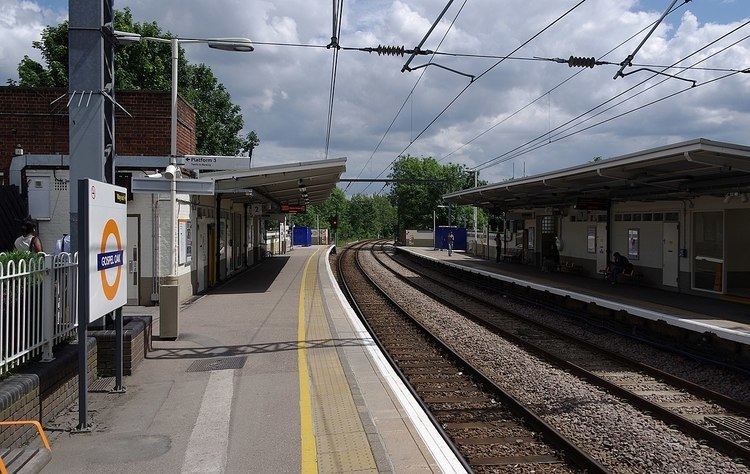DfT category D Opened 1860 | Station code GPO Address London, United Kingdom Number of platforms 3 | |
 | ||
Local authority Similar Barking station, Kentish Town West railway st, Upper Holloway railway st, Hampstead Heath railway st, Crouch Hill railway station | ||
Train simulator 2017 route learning gospel oak to barking class 172
Gospel Oak railway station is in the London Borough of Camden in north London. It is on the North London Line (NLL) and is also the western passenger terminus of the Gospel Oak to Barking Line. Passengers using Oyster cards are required to tap on interchange Oyster card readers when changing between the two lines. The station is in Travelcard Zone 2, and is managed by London Overground which runs all passenger trains at the station.
Contents
- Train simulator 2017 route learning gospel oak to barking class 172
- History
- Design
- Services
- Connections
- In arts and music
- References
History
The station opened in 1860 as Kentish Town on the Hampstead Junction Railway from Camden Road to Old Oak Common Junction south of Willesden Junction. It was renamed Gospel Oak in 1867 when a new station more appropriately named Kentish Town was opened about a mile south on the same line (that station is now Kentish Town West). Due to financial constraints a planned connection from the Tottenham and Hampstead Junction Railway to Gospel Oak station was not added until 4 June 1888, some 20 years after that railway opened, and then without a link to the North London Line due to other companies' opposition.
From 1926 to 1981, the station was not a passenger interchange: passenger trains left the Barking line at Tufnell Park and descended the gradient to Kentish Town station. In 1981 that passenger service from Barking was diverted from Kentish Town to Gospel Oak with the terminal platform rebuilt on the north side of the existing station.
The North London Line through Gospel Oak was electrified on the fourth-rail 660 volt DC system in 1916 by the LNWR: in the 1970s that was changed to 750 volt DC third rail. In 1996, the line from Willesden through Gospel Oak to Camden was closed during conversion to 25kv AC overhead.
Design
The platforms are high above street level with stairs and two lifts, one serving westbound trains, and one serving eastbound trains and the Barking line. The North London Line has two platforms and the Barking line has a short terminal platform north of which are two separate through freight tracks which join the NLL just west of the station. Oyster ticket barriers are in operation.
Services
To allow four-car trains to run on the London Overground network, the North London Line between this station and Stratford closed from February 2010 to 1 June 2010, for installing a new signalling system and for extending 30 platforms. Until May 2011, there was a reduced service with no services on Sundays while the upgrade work continued.
The typical off-peak service at the station in trains per hour is:
Services on the Barking line will be disrupted from 6 June 2016, when major infrastructure work begins on the route to prepare it for electrification. From 6 June until 23 September, services will be suspended east of South Tottenham on weekdays and thereafter all weekday trains over the route will be replaced by buses until February 2017. Weekend trains will be suspended throughout for the entire duration of the work and are not due to restart until June 2017.
Connections
London Buses route C11 serves the station.
In arts and music
The two brick skew arch bridges by which the trains cross Gordon House Road are shown in the cover photograph of the 1997 Gospel Oak EP by Irish singer Sinéad O'Connor.
